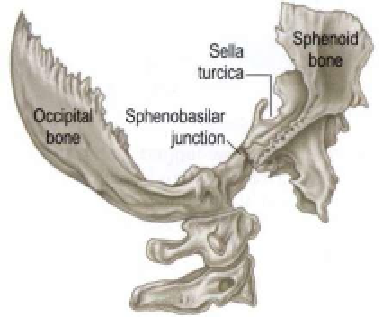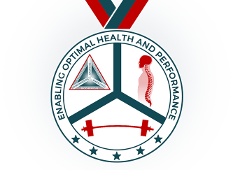You may be surprised to learn that when we breath, our cranial (skull) bones also move, in a process termed “primary respiration”. Describing the entire process in detail is beyond the scope of a simple blog post, but the proper movement of 2 bones in particular may be of great importance to overall general health.
Below: Figure 1 depicts, a side view of the articulation of the basilar portion of the occipital bone and the sphenoid bone forming the spheno-basilar junction, as well as the base of the cranial vault. The sphenobasilar junction moves superiorly on inspiration, and inferiorly on expiration.

Occipital Bone (aka Occiput) – forms the base and posterior aspect of the cranium (skull). If the occiput does not sit correctly on the 1st cervical (cervical=neck) vertebrae, it often will interfere with correct movement of the sphenoid bone. And because we have many neurological reflexes designed to keep the eyes level with the horizon, an occiput that is not aligned properly often causes headaches, neck stiffness, and other compensatory structural issues further down the kinetic chain.
Sphenoid Bone – forms the anterior aspect of the base of the cranium. Sub-optimal spheno-basilar movement during primary respiration may lead to excess dural tension, potentially causing headaches, blurry vision, tinnitus, balance issues, and more. Also interesting is that the pituitary gland–the master glad–sits inside the sphenoid at the sella turcica. The anterior lobe of the pituitary gland releases hormones into the blood stream that effects many other glands throughout the entire body. It has been theorized (but not proven) that subtle movement of the sphenoid optimizes maximal release of hormones from the anterior pituitary gland. Therefore, it may be of interest to both patient and practitioner to ensure that all structures in the area of the cranium are functioning properly in order to attain optimal function and general health. Besides poor occipital motion, optimal movement of the sphenoid bone can also be affected by tight jaw muscles, joint dysfunction of other cranials, and even coccyx (tail bone) issues.
Unfortunately, these conditions can often be overlooked. However, once identified are typically very easy to treat, and can provide tremendous relief from a wide range of symptoms in a very short time with the correct therapies.
